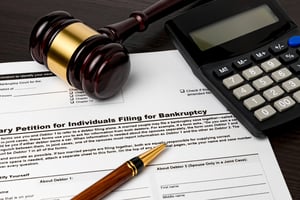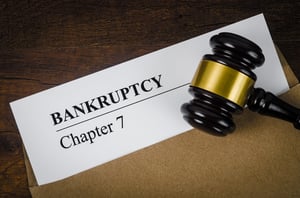Can I Keep the Furniture I am Financing After I File for Bankruptcy, in St. Paul, Minnesota?
Debtors filing for bankruptcy often wonder whether they should keep making payments on furniture they are financing. Prior to filing for bankruptcy, many people purchase household goods and items, such as furniture, television, and electronics on credit. Generally, the agreement is that the store will allow them to purchase the household good, so long as they continue to pay through an installment agreement, whereby they make monthly payments until the purchase price is paid in full. The amount still owed on the loan at the time the debtor files for bankruptcy is also considered a debt. The debt is a secured debt, because the household good was purchased on credit and the store has a security interest in the household good as collateral. If the buyer fails to make payments, the store has the legal right to repossess the furniture.
When a debtor files for bankruptcy, they generally have the option of either continuing to make payments on their secured debts in order to keep the collateral, or cease making payments and “surrender” the collateral by allowing the creditor to repossess it. For assets of higher value, such as a vehicle or a house, the debtor will usually continue to make the car and house payments in order to avoid a car repossession or a home foreclosure. The reason is because with valuable assets, there is a high risk that the creditor will take the property back if the payments on the debt are not made. If a creditor repossesses a debtor’s car or forecloses on a debtor’s house, the creditor will attempt to sell the property to repay the loan, and possibly receive a profit if the car or house sells for more than the amount of debt owed. However, with furniture purchased on credit, this is not usually the case. Due to the fact that used household items have very low resale value, it is extremely unlikely that a creditor will take the time and effort to repossess the property in the event of a default on payments. For this reason, it typically makes little sense for a debtor to continue making payments on furniture or other household goods that were purchased on credit, after filing either a Chapter 7 or a Chapter 13 bankruptcy. The creditor will probably not repossess the property and the debt owed to the creditor will simply be discharged in the debtor’s bankruptcy. The debtor will be able to keep their household goods without making any more payments after filing for bankruptcy.
CALL NOW FOR A FREE STRATEGY SESSION FROM A MN BANKRUPTCY LAWYER AT LIFEBACK LAW FIRM
To learn more about whether it makes sense to continue paying for your furniture and household goods that were purchased on credit, come see us at our new office in St. Paul, Minnesota, or come visit us at LifeBackLaw.com!







